The Man Who Fell to Earth
7.6 /10 1 Votes
86% Rotten Tomatoes 74% Metacritic Genre Sci-Fi, Drama Country United Kingdom | 6.7/10 IMDb 3/4 Roger Ebert Director Nicolas Roeg Duration Language English | |||||||||||||||||||||||||||||||||
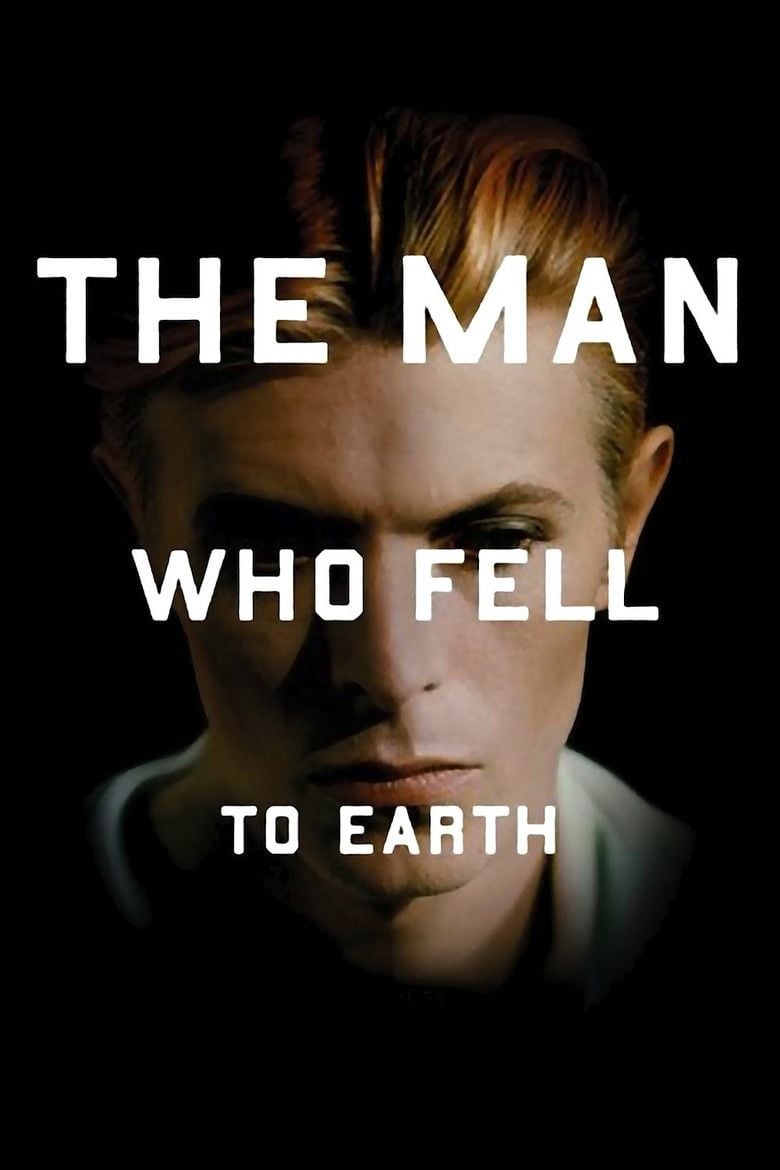 | ||||||||||||||||||||||||||||||||||
Release date 18 March 1976 (1976-03-18) (UK)28 May 1976 (1976-05-28) (US) Based on The Man Who Fell to Earth by Walter Tevis Writer Paul Mayersberg (screenplay), Walter Tevis (from the novel by) Screenplay Walter Tevis, Paul Mayersberg Music director Stomu Yamashta, John Phillips Cast David Bowie (Thomas Jerome Newton), Rip Torn (Nathan Bryce), Candy Clark (Mary-Lou), Tony Mascia (Arthur), Buck Henry (Oliver Farnsworth), Bernie Casey (Peters)Tagline You have to believe it to see it Similar Contact (1997 American film), Lifeforce (film), The Day the Earth Stood Still (2008 film) | ||||||||||||||||||||||||||||||||||
The man who fell to earth trailer
The Man Who Fell to Earth is a 1976 British science fiction drama film directed by Nicolas Roeg and written by Paul Mayersberg, based on Walter Tevis' 1963 novel of the same name, about an extraterrestrial who crash lands on Earth seeking a way to ship water to his planet, which is suffering from a severe drought. The film maintains a strong cult following for its use of surreal imagery and its performances by David Bowie (in his first starring film role), Candy Clark, and Hollywood veteran Rip Torn. The same novel was later remade as a less successful 1987 television adaptation.
Contents
- The man who fell to earth trailer
- The man who fell to earth 1976 commentary
- Plot
- Cast
- Cameos
- Production
- Music
- Release
- Reception
- Home media
- In popular culture
- References

The film was produced by Michael Deeley and Barry Spikings, who reunited two years later to work on The Deer Hunter.
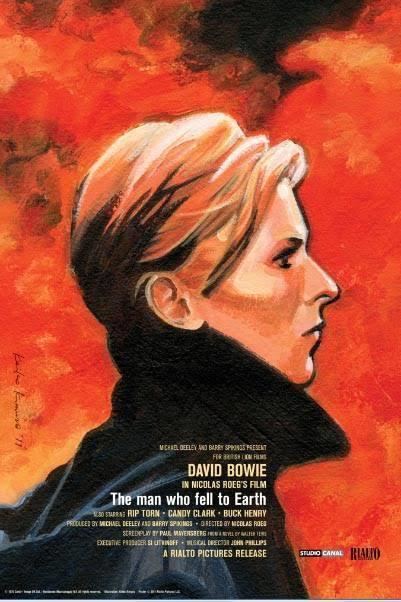
The man who fell to earth 1976 commentary
Plot

Thomas Jerome Newton is a humanoid alien who comes to Earth from a distant planet on a mission to take water back to his home planet, which is experiencing a catastrophic drought.
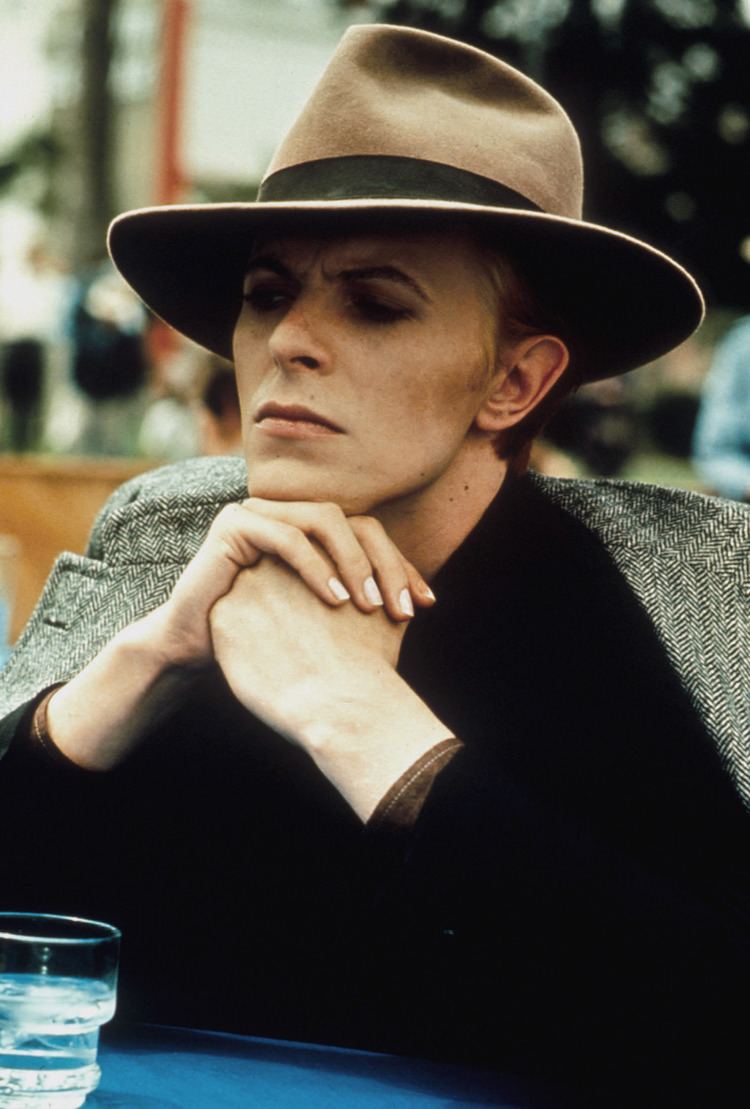
Newton uses the advanced technology of his home planet to patent many inventions on Earth, and acquires incredible wealth as the head of a technology-based conglomerate, World Enterprises Corporation, aided by leading patent attorney Oliver Farnsworth. His wealth is needed to construct his own space vehicle with the intention of shipping water back to his planet. While revisiting New Mexico, he meets Mary-Lou, a lonely, unloved, and simple girl who works as a maid, bell-hop, and elevator operator in a small hotel; he tells her he is English. Mary-Lou introduces Newton to many customs of Earth, including church-going, alcohol, and sex. She and Newton live together, eventually in a house Newton has had built near where he initially landed in New Mexico.
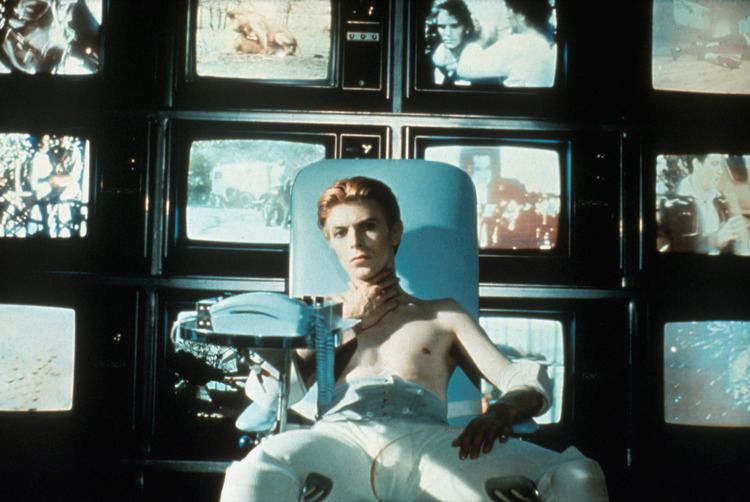
Meanwhile, Dr. Nathan Bryce, a former womaniser and college professor, has landed a job as a fuel technician with World Enterprises and slowly becomes Newton's confidant. Bryce senses Newton's alienness and arranges a meeting with Newton at his home where he has hidden a special X-ray camera. When he steals a picture of Newton with the camera, it reveals Newton's alien physiology. Newton's appetite for alcohol and television (he watches multiple televisions at once) becomes crippling and he and Mary-Lou fight. Realizing that Bryce has learnt his secret, Newton reveals his alien form to Mary-Lou, and her resulting reaction is one of pure shock and horror. He leaves her.
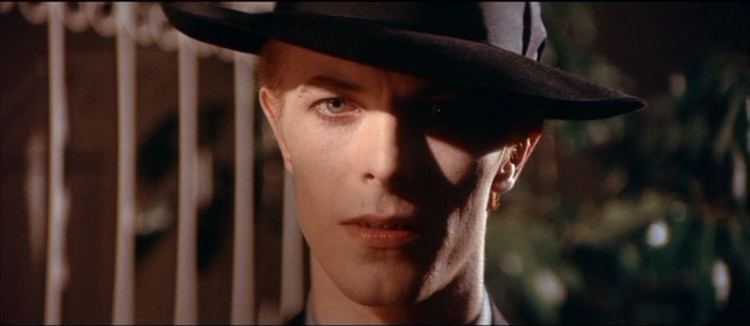
Newton completes the spaceship and attempts to take it on its maiden voyage amid intense press exposure. However, just before his scheduled take-off, he is seized and detained, apparently by the government and a rival company; his business partner, Farnsworth, is murdered. The government, which has apparently been told by Bryce that Newton is an alien, holds him captive in a locked luxury apartment, constructed deep within a hotel. During his stay, they keep him sedated with alcohol (to which he has become addicted) and continuously subject him to rigorous medical tests – notably one involving X-rays which causes the contact lenses he wears as part of his human disguise to permanently affix themselves to his eyes.
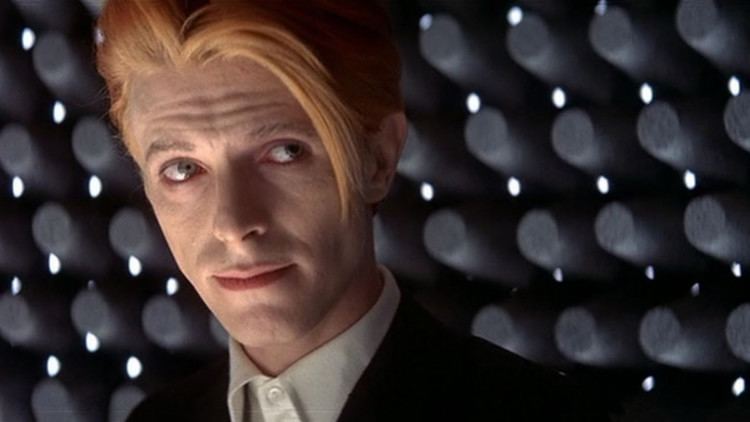
Toward the end of his years of captivity, he is visited again by Mary-Lou, who is now much older and whose looks have been ravaged by alcohol and time. They have mock-violent, playful sex that involves firing a gun with blanks, and afterwards occupy their time drinking and playing table tennis. Mary-Lou declares that she no longer loves him, while he says that he doesn't love her either. She leaves him. Eventually Newton discovers that his "prison," now derelict, is unlocked, and he escapes.
Throughout the film are brief sequences of his wife and children back on his home planet, slowly dying, and by the end of the film they are dead and Newton is stuck on Earth, broken, alcoholic, and alone. He creates a recording with alien messages, which he hopes will be broadcast via radio to his home planet. Bryce, who has since married Mary-Lou, buys a copy of the album and meets Newton at an outside restaurant in town. Newton is still rich and young looking despite the passage of many years. However, Newton has also fallen into depression and alcoholism and the film ends with an inebriated Newton passing out in his cafe chair.
Cast
Cameos
In the scene in which Newton attempts to board his spacecraft, he is greeted by a crowd that includes real-life astronaut Jim Lovell (commander of the ill-fated Apollo 13 mission), playing himself, and by author Terry Southern, as a reporter. In the scene set in the record store, an advertising banner for Bowie's album Young Americans can be seen hanging from the ceiling as the shot follows Bryce's walk behind the record bins.
Production
Paramount Pictures had distributed Roeg's previous film, Don't Look Now (1973) and agreed to pay $1.5 million for the US rights. Michael Deeley used this guarantee to raise finance to make the film.
Filming began on 6 July 1975. The film was primarily shot in New Mexico, with filming locations in Albuquerque, White Sands, Artesia and Fenton Lake. The film's production had been scheduled to last eleven weeks, and throughout that time, the film crew ran into a variety of obstacles: Bowie was sidelined for a few days after drinking bad milk; film cameras jammed up; and for one scene shot in the desert, the movie crew had to contend with a group of Hells Angels who were camping nearby.
Bowie, who was using cocaine during the movie's production, was in a fragile state of mind when filming was underway, going so far as to state in 1983 that "I'm so pleased I made that [film], but I didn't really know what was being made at all". He said of his performance:
I just threw my real self into that movie as I was at that time. It was the first thing I'd ever done. I was virtually ignorant of the established procedure [of making movies], so I was going a lot on instinct, and my instinct was pretty dissipated. I just learned the lines for that day and did them the way I was feeling. It wasn't that far off. I actually was feeling as alienated as that character was. It was a pretty natural performance. ... a good exhibition of somebody literally falling apart in front of you. I was totally insecure with about 10 grams [of cocaine] a day in me. I was stoned out of my mind from beginning to end.
Candy Clark, Bowie's co-star remembers things differently: "David vowed to Nic, ‘No drug use,’’ says Clark and he was a man of his word, "clear as a bell, focused, friendly and professional and leading the team. You can see it clearly because of (DP) Tony Richmond’s brilliant cinematography. Look at David: his skin is luminescent. He’s gorgeous, angelic, heavenly. He was absolutely perfect as the man from another planet." She added that Roeg had hired "an entirely British crew with him to New Mexico and I remember David was very happy about that."
Bowie and director Roeg had a good relationship on set. Bowie recalled in 1992 that "we got on rather well. I think I was fulfilling what he needed from me for that role. I wasn't disrupting ... I wasn't disrupted. In fact, I was very eager to please. And amazingly enough, I was able to carry out everything I was asked to do. I was quite willing to stay up as long as anybody."
Music
Although Bowie was originally approached to provide the music, contractual wrangles during production caused him to withdraw from this aspect of the project. The music used in the film was coordinated by John Phillips, former leader of the pop group The Mamas & the Papas, with personal contributions from Phillips and Japanese percussionist-composer Stomu Yamash'ta, as well as some stock music. Phillips called in former Rolling Stones guitarist Mick Taylor, to assist with developing ideas for the soundtrack. The music was recorded at CTS Lansdowne Recording Studios in London, England.
Due to a creative and contractual dispute between Roeg and the studio, no official soundtrack was released for the film, even though the 1976 Pan Books paperback edition of the novel (released to tie in with the film) states on the back cover that the soundtrack is available on RCA Records. The soundtrack, derived from recently rediscovered masters, was eventually released on CD and LP in 2016 to coincide with the fortieth anniversary of the film's premiere. The music by Yamash'ta had already appeared on his own albums, as noted below.
Special electronic and oceanic effects were done by Desmond Briscoe and Woods Hole Oceanographic Institution
Release
According to Michael Deeley, when Barry Diller of Paramount saw the finished film he refused to pay for it, claiming it was different from the film the studio wanted. British Lion sued Paramount and received a small settlement. The film obtained a small release in the United States through Cinema V in exchange for $850,000 and due to foreign sales the film's budget was just recouped.
The British Board of Film Censors passed the film uncut for adult UK audiences with an X rating.
It was announced in the summer of 2016 that the film was in the process of being digitally remastered to 4K quality for its 40th anniversary (which was reported to have begun before Bowie's death). This remastered version premiered at BFI Southbank before being released in cinemas across the UK on 9 September of that year.
Reception
Since its original 1976 release, The Man Who Fell to Earth has grown to cult status particularly among science fiction enthusiasts and David Bowie fans. On film review site Rotten Tomatoes, the film has earned an 83% "Fresh" rating based on 48 reviews with a consensus of: "Filled with stunning imagery, The Man Who Fell to Earth is a calm, meditative film that profoundly explores our culture's values and desires." Metacritic reports a 74 out of 100 rating based on 5 critics, indicating "generally favorable reviews". It was entered into the 26th Berlin International Film Festival. Bowie won the Saturn Award for Best Actor for his work in the film.
Roger Ebert of the Chicago Sun-Times awarded the film 2½ stars of four; while he complimented parts of the film and the directing, he was dismissive of the plot, writing in his review that the film is "so preposterous and posturing, so filled with gaps of logic and continuity, that if it weren't so solemn there'd be the temptation to laugh aloud." When re-released in 2011, Ebert gave the film three stars, stating that readers should "consider this just a quiet protest vote against the way projects this ambitious are no longer possible in the mainstream movie industry." Richard Eder of The New York Times praised the film, writing, "There are quite a few science-fiction movies scheduled to come out in the next year or so. We shall be lucky if even one or two are as absorbing and as beautiful as The Man Who Fell to Earth."
Home media
The Man Who Fell to Earth was originally released on DVD on 25 August 1998 through Fox Lorber with no special features. On 11 February 2003, Anchor Bay released a special edition two-disc set of the film. This version contains many special features such as commentaries, interviews, and a trailer. Finally, on 27 September 2005, the film was released in a high-definition widescreen transfer as a part of the Criterion Collection. This director-approved edition of the film contained all of the special features of the Anchor Bay version plus newer interviews. The Criterion Collection then re-released the film on 16 December 2008 in the Blu-ray format. It has since gone out of print. For a limited time the 2005 Criterion Collection DVD Came with a copy of the book by Walter Tevis-(Paperback-Unabriged)Published by Del-Rey Press-(Ballantine). In July 2016, STUDIOCANAL revealed they were planning a re-release of the film on DVD and Blu-ray ready for 10 October, followed by a 'special collector's edition'.
